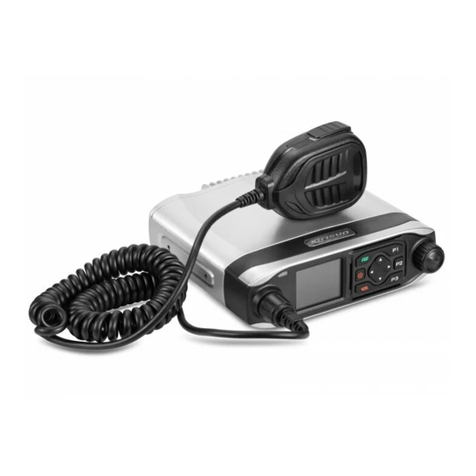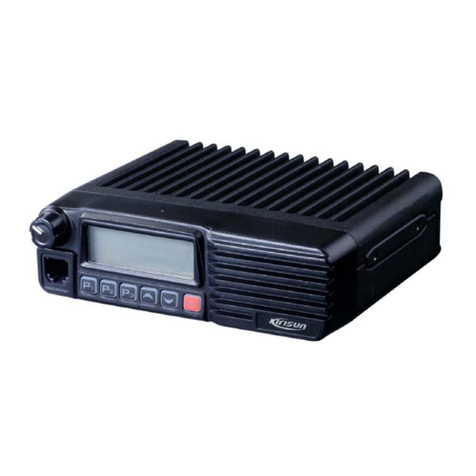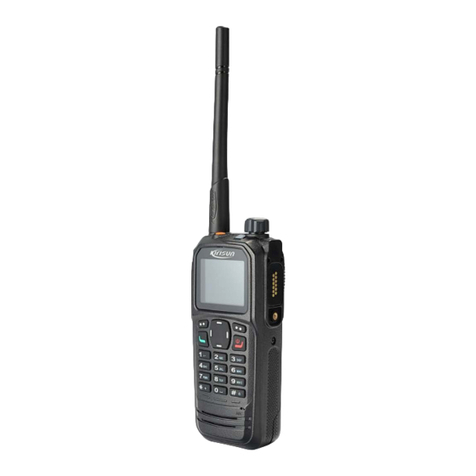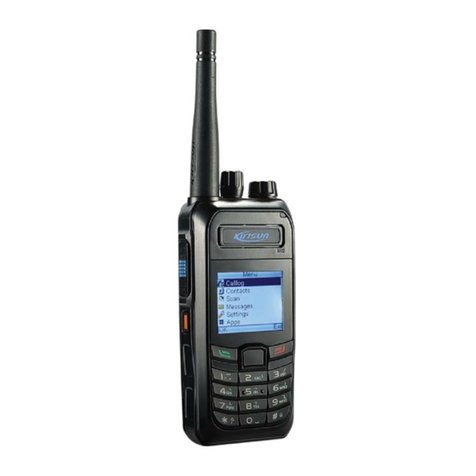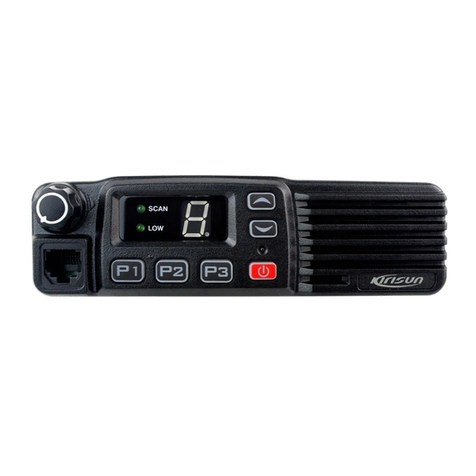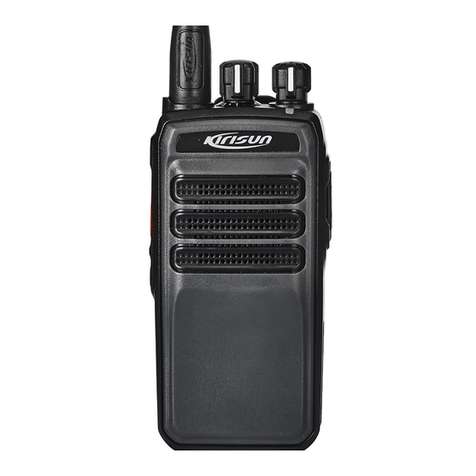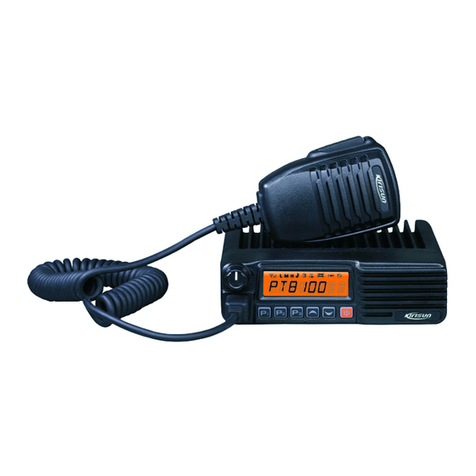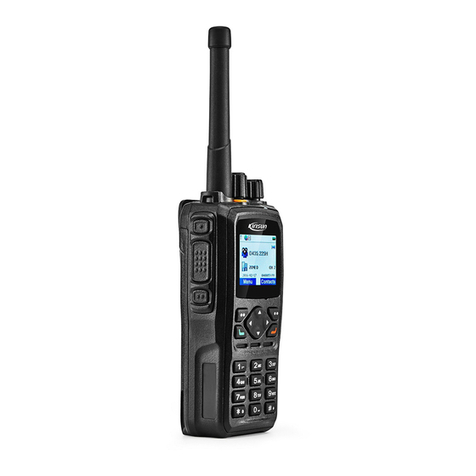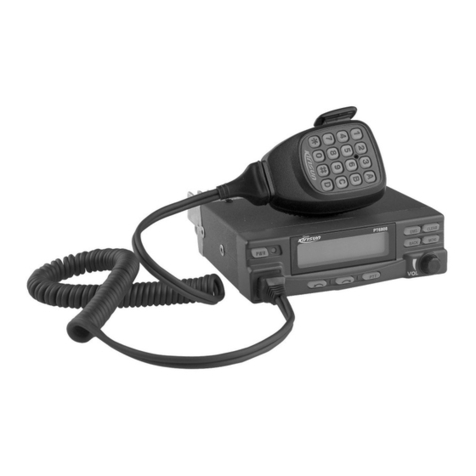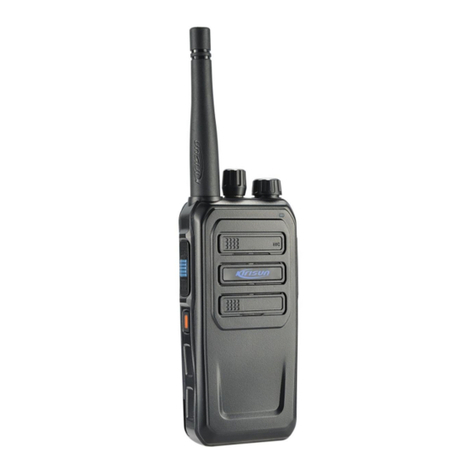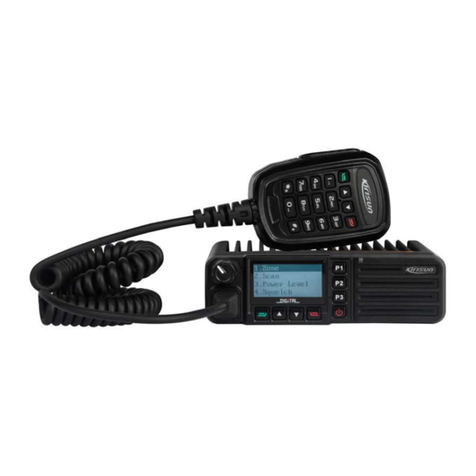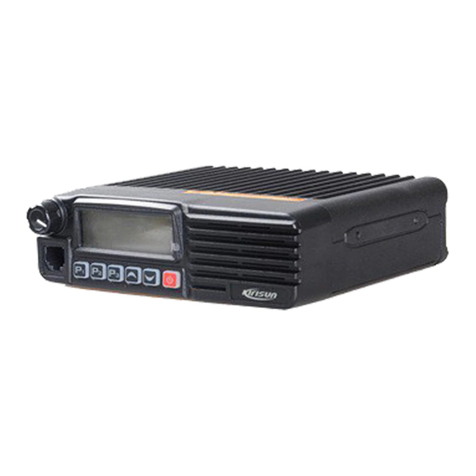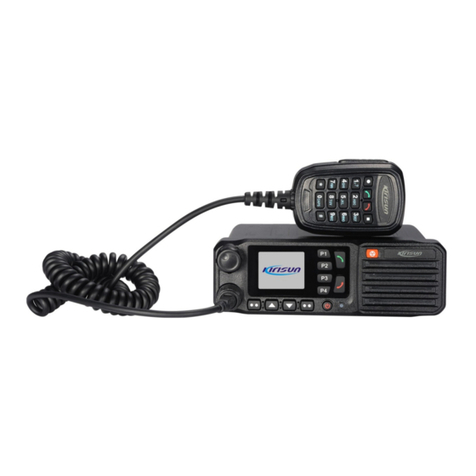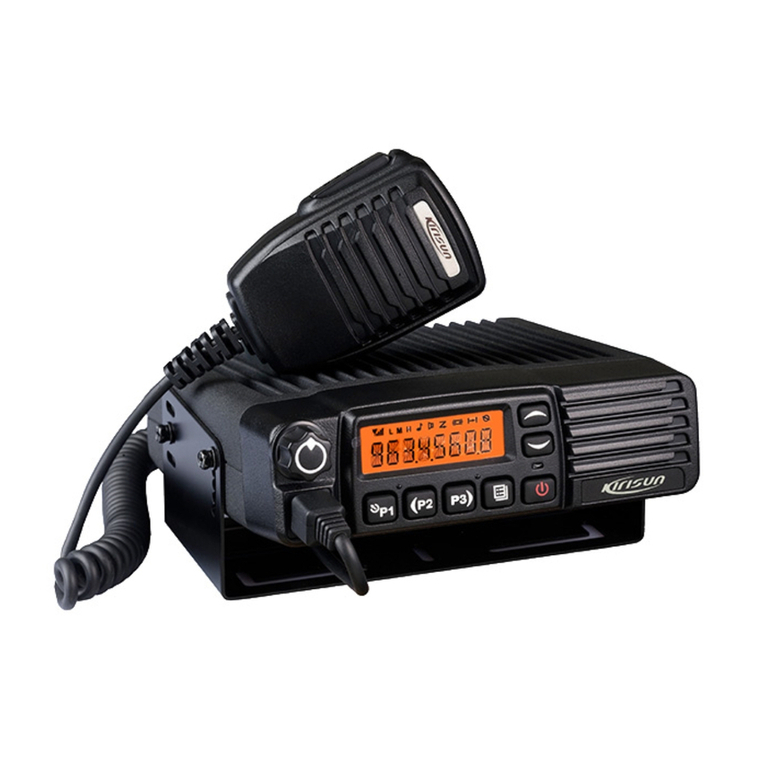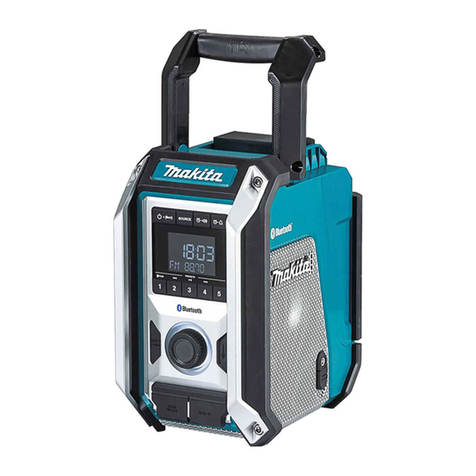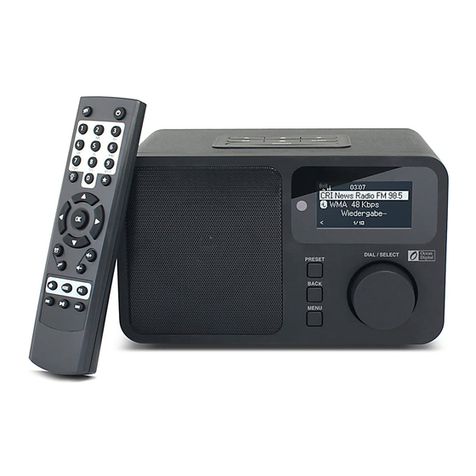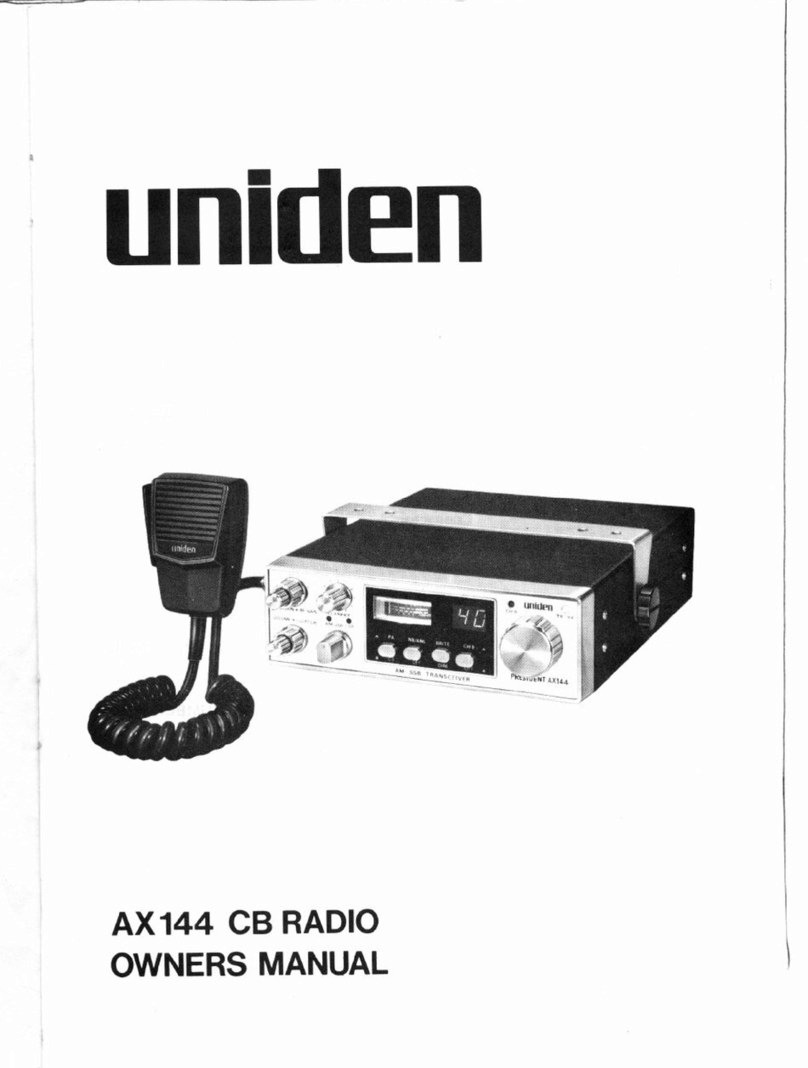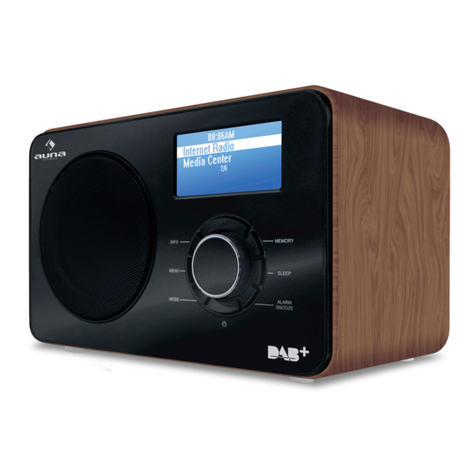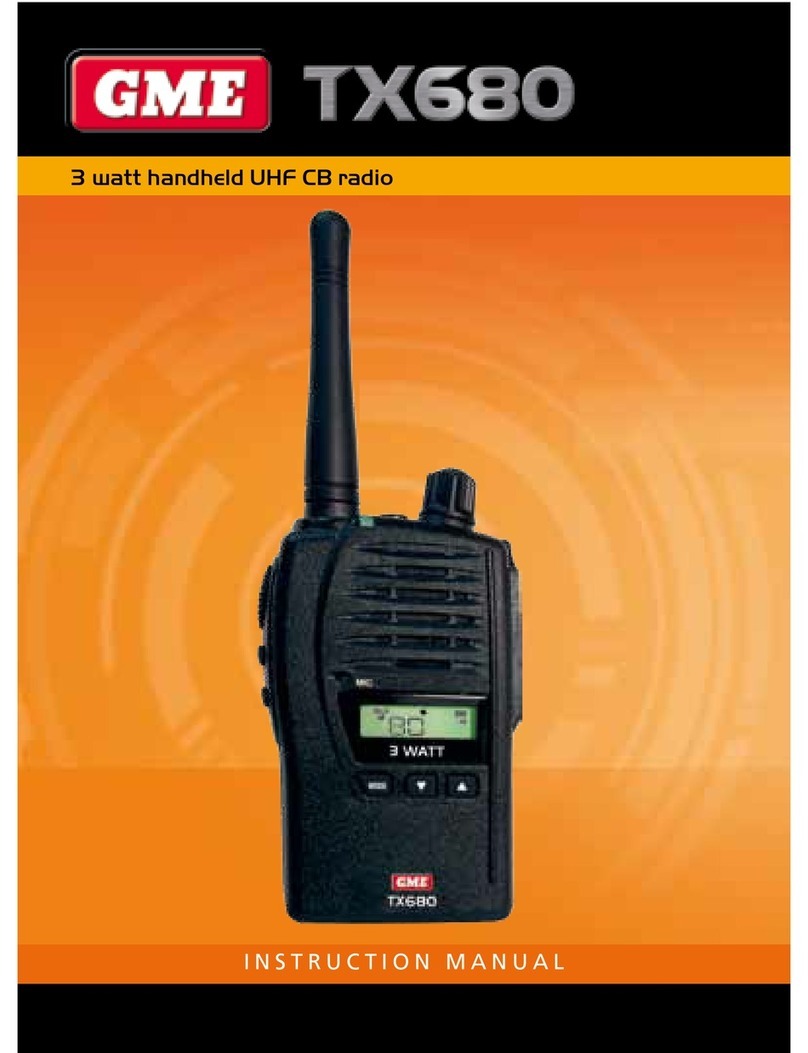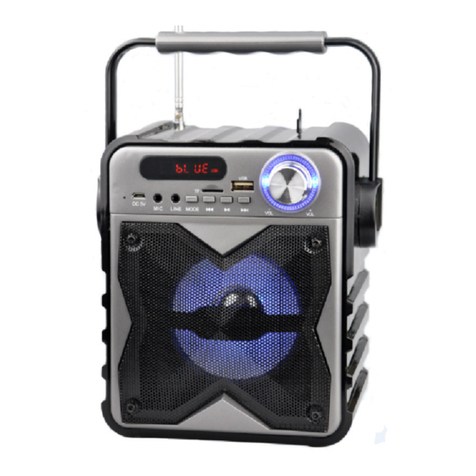PT4208 Service Manual
7
DCS (Digital Code Squelch), which is used to control
squelch, is a series of continuous digital codes modulated on
carrier together with voice signal. If DCS is set, the speaker
can be opened only when the radio receives signal with the
same DCS to avoid disturbance of unwanted signals.
PT4208 has 83 standard codes (inverted and
non-inverted) for your selection. See table 3.2.
DCS signal is produced by MCU (in waveform of PWM).
It passes through the low pass filter consists of RC to
remove the high frequency components (above 300Hz).
Then the resulting signal is sent to VCO and TCXO for
modulation, with HF components of the DCS signal being
modulated by VCO, and the LF components of the DCS
signal being modulated by TCXO.
The DCS signal coming from the receiver is routed to
MCU for decoding. MCU checks if the DCS code in the
received signal matches the preset DCS of the radio, and
determines whether to open the speaker or not.
Table 3.2 DCS Codes
023 114 174 315 445 631
025 115 205 331 464 632
026 116 223 343 465 654
031 125 226 346 466 662
032 131 243 351 503 664
043 132 244 364 506 703
047 134 245 365 516 712
051 143 251 371 532 723
054 152 261 411 546 731
065 155 263 412 565 732
071 156 265 413 606 734
072 162 271 423 612 743
073 165 306 431 624 754
074 172 311 432 627
3.8 Semiconductor Data
Refer to table 3.3 for descriptions of each pin.
Table 3.3 Definition of CPU Pins
No. Port name Pin Name I/O Function
1 TOPKEY P33 I Top key detect
2 UPKEY P34 I Up key detect
3 MODE I Connect the 4.7K resistor with VCC,
programming test point
4 PTT P43 I [PTT] input
5 DNKEY P44 I Down key detect
6 RST I Reset input, programming test point
7 XOUT O Oscillator
8 VSS I GND
9 XIN I Oscillator(7.3MHz)
10 VCC I 5V CPU power input
11 SHIFT P54 O Clock beat shift. H:On
12 TO0 P53 O (PWM) BPF tuning output
13 TO1 P52 O (PWM) QT/DQT output
14 VDEVC2 P51 I Deviation switch 2 of VHF
15 VDEVC1 P50 I Deviation switch 1 of VHF
16 NC Connect the pull-down resistor with VSS
17 PABC P26 O Final power supply H:On
18 OSCSI P25 I VCO crystal select and connect the
pull-down resistor with VSS. H: 13, L:
16.8
19 WNTC P24 O Wideband/Narrowband control.
H: Wideband L: Narrowband
20 ENC0 P23 I Encoder input
21 ENC2 P22 I Encoder input
22 ENC3 P21 I Encoder input
23 ENC1 P20 I Encoder input
24 PS P17 O PLL power-saving control. H: Normal L:
Power Saving
25 NC Connect the pull-down resistor with VSS
26 NC Connect the pull-down resistor with VSS
27 NC P86 Connect the pull-down resistor with VSS
28 SDA P85 I/O E2PROM data line
29 SCL P84 O E2PROM clock line
30 UL P83 I
I (TRFI)
PLL unlock detect pin
H: Locked L: Unlocked
31 T2IN P82 Reserved:2TONE input
32 DT P81 O PLL data output
33 CK P80 O PLL clock output
34 LE P60 O PLL IC enable pin. H: Locked
35 5MC P45 O
Power control except CPU and E2PROM
L:On
36 INT P66 I Power detect input
37 TXD P67 O RS-232C output, programming test point
38 RXD P65 I RS-232C input, programming test point
39 AFCO P64 O AF amplification power
H: On
40 RX P63 O TX/RX VCO select H: Receiving
41 GLED P31 O Green LED control H: On
42 APC P30 O (PWM) TX: Automatic power control output
43 RLED P36 O Red LED control H: On
44 SAVE P32 O
O
Battery saving control. H:Supply power,
L: Power saving
45 MUTE P13 O Mute control. H: MIC mute; L: Audio
mute
46 5RC P12 Receiving power control. L: On
47 5TC O Transmitting power control. H:On
48 NC P10 Speaker mute switch output
49 TI P00 I (A/D8) QT/DQT signal input
50 RSSI I (A/D7) Signal strength detect
51 BUSY P01 I (A/D6) Busy signal input
52 MANDO
WN
P02 I (A/D5) Man-down switch detect
53 BATT P03 I (A/D4) Battery voltage detect
54 NC Connect the pull-down resistor with VSS
55 W588C P62 O Voice alert switch. H: Channel No.
reporting
56 AC P61 O Alarm switch control. H: Controlled by
Volume Switch
The power level must be low in case of
emergency alarm
57 BUSY_V P05 I Voice alert circuit busy detect
58 VCCN P06 O (D/A0) Frequency stability output
59 AVSS I Connect with VSS
60 DTMF P07 O (D/A1) DTMF Output
61 VREF I Connect with VCC
62 AVCC I Connect with VCC
63 DATA_V P37 O Voice alert data


